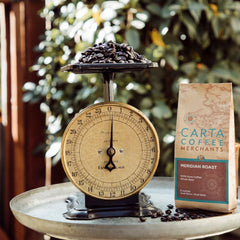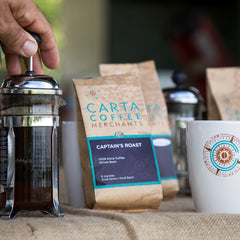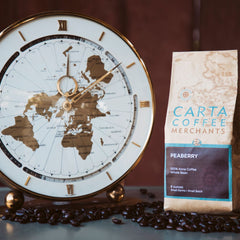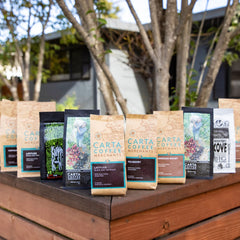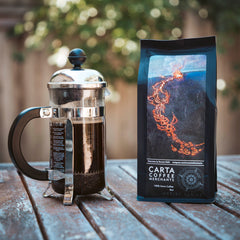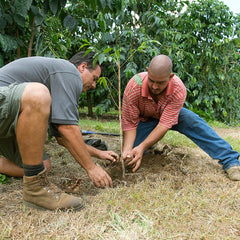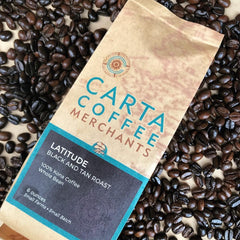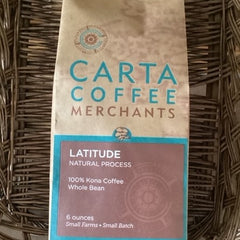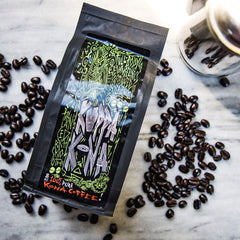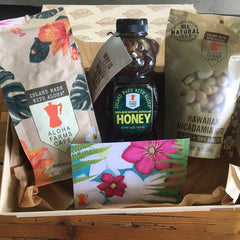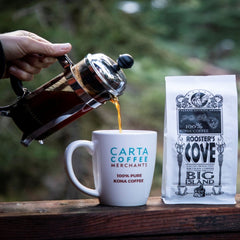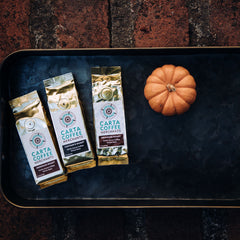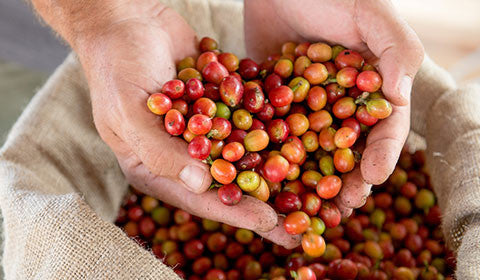Posted on

Any regular coffee drinker knows Hawaii grows some of the world’s best coffee. Exclusive and delicious, this celebrated bean helped launch this rocky, volcanic island chain into a global coffee destination.
As a major tourist hub, and the only state in the U.S. with the ability to grow sizable coffee farms, it’s no surprise that people flock to Hawaii’s many coffee plantations when visiting. There’s nothing like seeing the famous beans be grown, harvested, roasted and ground down before your eyes, then getting to enjoy the rich brew yourself.
Though most of the Islands produce coffee, it’s the Big Island of Hawaii that reigns supreme as the bean king. So what really makes the Big Island’s coffee so special, and how can connoisseurs of this buzzy bean get the most out of Hawaii’s legendary brew?
A Very Brief History of Hawaiian Coffee
It’s nearly impossible to get a true grasp on the importance of coffee in Hawaii without a little history lesson. How did coffee get to the Hawaiian Islands in the first place, and why did it evolve into the economy it is today?
After several failed attempts to grow Hawaiian coffee earlier in the century, it was American Missionary Reverend Samuel Ruggles who successfully grew Brazilian tree clippings in Hawaii in 1828. As the coffee plants flourished, he sparked the first truly successful coffee groves in Kona.
Over the next century, Kona was easily solidified as Hawaii’s coffee capital for it’s superior soil, perfect climate and variety of farms. As the popularity of sugar cane, pineapples, and macadamia nuts developed on other islands, Kona residents mostly stuck with the crop they knew they excelled in.
It was World War II casting Hawaii into the spotlight, and millions of soldiers coming home obsessed with the caffeinated drink, that anchored coffee as a true American staple. Though a basic cup of Joe was the norm for decades, the boom of specialty coffee with distinct personalities, histories, flavors, and more became the trend. With this trend came the desire for amazing coffee with a story.
And what’s a better story than that of coffee grown in an alluring place like Hawaii?
What Makes Hawaiian Coffee So Special?
With a plethora of stellar coffee choices on the market, why do Hawaiian beans stand out?
Coffee is a true tree goldilocks. Conditions need to be just right for these picky beans to grow. A locale needs the perfect mix of moisture, temperature, elevation, soil, and care for coffee to thrive. This is why moist, tropical environments make for the best places to grow coffee.
Hawaii lucked out in many ways with its stellar location. Solidly in the tropics at between 8–9 degrees above the equator, the weather is perfectly suited for impeccable coffee growing conditions.
However, it takes more than great weather to grow great coffee. The rich minerals from within the volcanic soil helps sustain hearty plants with powerful, unique flavors. These flavors are also amplified by changes in elevation and shade. With jagged mountains rising out of the ocean and endless foliage canopies, Hawaii has no shortage of these natural bean enhancers.
Kona coffee takes the cup as the most famous thanks to a long history of high-quality beans and over 650 working farms. The stringent certifications that ensure only the real thing can be labeled as Kona coffee also helps publicize the bean as a reputable brand.
How Does Hawaiian Coffee Taste?
Though flavors can vary depending on the island, elevation, soil, plant quality, and more, coffee drinkers should generally expect Hawaiian coffee to taste:
- Rich, but not overwhelming
- Medium bodied
- Bright
- Mildly fruity and floral
- Notes of chocolate
- Smooth
Overall, anticipate an exquisitely balanced sipping coffee with no bitter aftertaste. Again, every region will have unique characteristics. A brew in Kona could still taste much different than one from Kauai.
Why the High Price?
Another contribution to Hawaii coffee’s mystique is the hefty price tag. Why is it so expensive?
It mostly comes down to labor costs and limited space. Many other coffee growing regions worldwide have a much lower cost of living than the United States. They also often don’t have the same labor laws that ensure all employees earn a fair wage. As it costs more to run a business in the U.S., those costs are passed on to the consumers.
In addition, Hawaii is small without anywhere to expand. The limited space means there are few places to actually grow the coffee. To put that into perspective, Brazil, the world’s largest coffee producing country, boasts approximately 10,000 square miles of coffee crops. Hawaii has around 13 square miles total. No wonder it’s so pricey!
100% Kona Coffee vs. Kona Blends
Assuming you want the real thing, always check the label. Similar to champagne, all coffee labeled 100% Kona Coffee must be exactly that—only coffee from the Kona district of Hawaii. At the low end, expect to pay around $20 per pound with the average being closer to $30. Any less and you’re likely getting a blend.
If the label reads anything other than 100% Kona Coffee, chances are it’s a Kona blend. These are commonly made of only 10% real Kona beans with the rest made up of lesser quality “filler” beans. The price might be right, usually running between $7– $15, but don’t be fooled into thinking you’re getting the real thing.
Best Roasts for Hawaiian Coffee
As a general rule, the flavor of coffee will be stronger if it’s grown in higher elevation. Though Hawaii is a mountainous island, it’s still much lower in elevation than many African or South American growing regions.
This lends for an overall milder, smoother taste. Because of this, light to medium roasts are typically recommended for Hawaiian coffee. That doesn’t mean to count dark roasts out. Those deep flavors can greatly add to Kona coffee’s complexity.
Roasting experts often use techniques like naturally drying beans under the Hawaiian sun, or mixing dark roasts with lighters ones, allowing for a perfect balance of flavors. These processes let drinkers to enjoy the depth of a dark roast, without covering up Kona coffee’s unique origin flavors.
Best Ways to Enjoy Hawaiian Coffee
The balanced, bright flavors of Hawaiian coffee are enjoyed best when highlighted, not covered up or muddled. Instead, use a brewing method that allows the bean’s taste to shine.
- Drip Brew - Whether you prefer a pour-over or automatic drip, using a paper filter will bring out the bulk of Hawaiian coffee flavors. The low-acidic smoothness associated with drip coffee is perfect for relaxed, slow sipping.
- French Press - If you prefer a darker (but not too dark) Hawaiian coffee, try a French press. This will create a fuller-bodied beverage, without completely eliminating the unique experience.
Overall, Hawaiian coffee perfectly mirrors the islands it’s grown from — Relaxed, enjoyable, and incomparable.
Ready to experience some of Hawaii’s greatest coffee for yourself? Produced in the world famous Kona district, Carta Coffee’s exceptional small-batch 100% Kona coffee will exceed all expectations. Proudly and sustainably grown in Kona, Hawaii, Carta Coffee is proud to cultivate and roast only the best beans from one of the greatest coffee growing regions on Earth.


